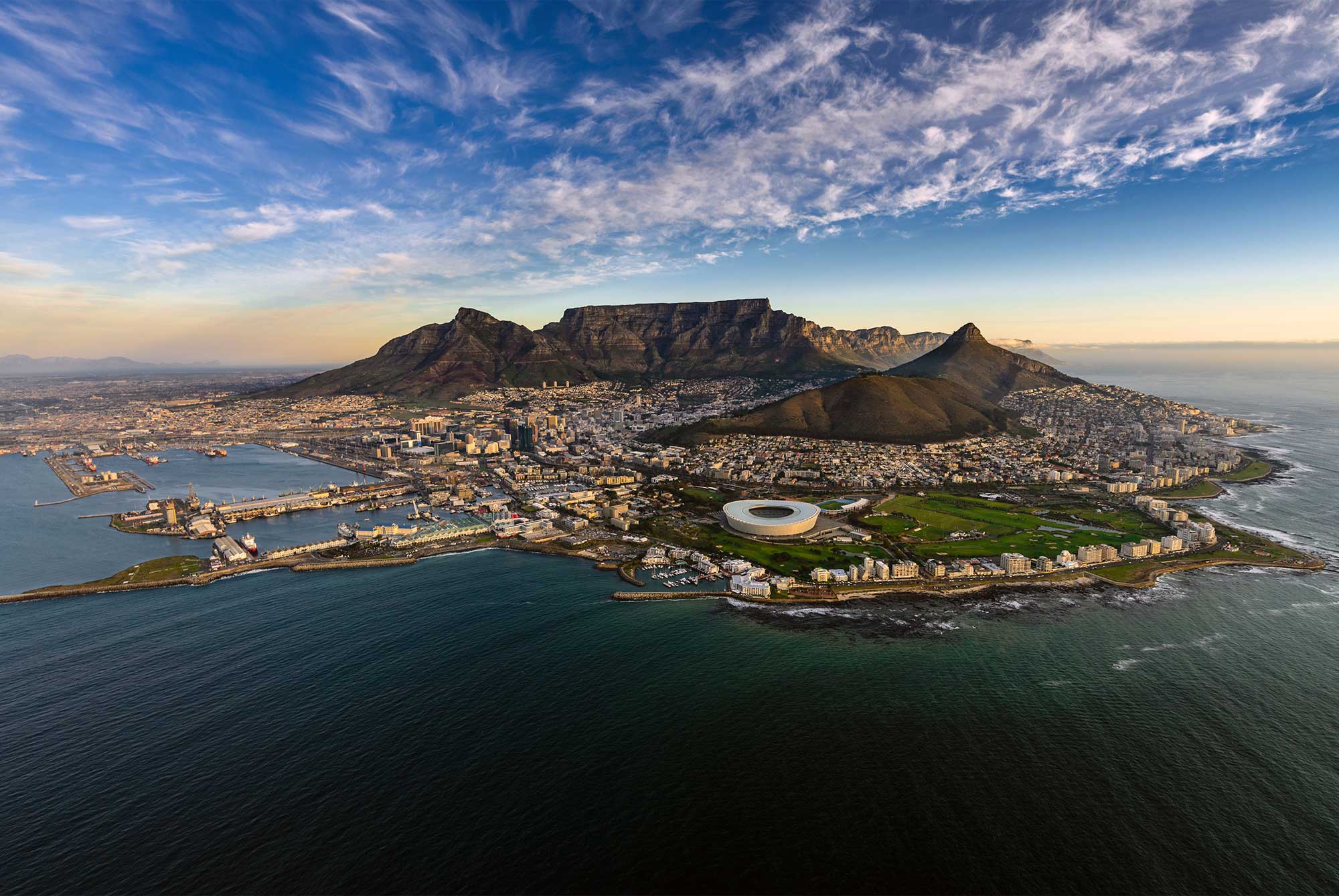South Africa
South Africa
For a varied, diverse, exciting and fulfilling holiday, one would be hard pressed to find a country in Africa, or the world, which offers more. South Africa has it all, including wildlife, mountains, deserts, beaches, forests, numerous cultures, first world cities, untouched landscapes, casinos, amusement parks, exciting activities, excellent roads and infrastructure, off road 4 x 4 routes, fantastic food, good wine, great sports stadiums, incredible people and a triumphant history.
South Africa Accommodation
Cape Town
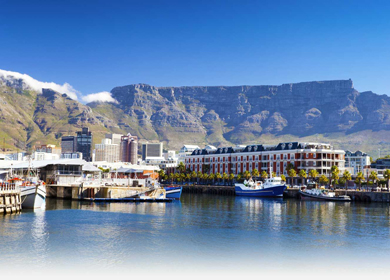
Scenically spectacular, with an array of activities on offer, Cape Town is great for an extended holiday on its own, or for an add on to a safari in South Africa, or any other countries.
As an easy 2 hour hop from Johannesburg, with numerous daily flights, as well as some international flights from and to various countries, Cape Town is easily accessible, and an enjoyable way to ease into, or wind down, an African itinerary.
Cape Town has regularly been voted amongst the world's most popular holiday destinations, with many visitors returning year after year.
More Details
Cape Winelands
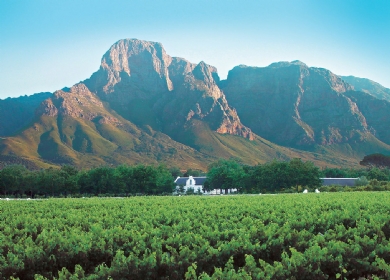
The Cape Winelands District stretches from Stellenbosch to Paarl and through majestic mountain passes to Tulbagh, Ceres or Op-die-Berg, or via the Huguenot Tunnel to Worcester and into the Hex River Valley, along the N1 Touwsrivier. For the return drive, one could take a leisurely wind through the backroads to Montagu, taking the long way to Stellenbosch. These destinations are all accessible within 30 to 120 minute's drive from Cape Town.
The district offers something for everyone, whether you are a family of thrill-seeking mountain bikers, a multi-generational group of foodies, birders, campers, glampers or wine (or gin, beer or brandy) connoisseurs, a bunch of festivegoers, a solo traveller interested in our history or a couple searching for that perfect wedding spot, the CWD has options that will suit your needs and your pockets.
More Details
Cederberg
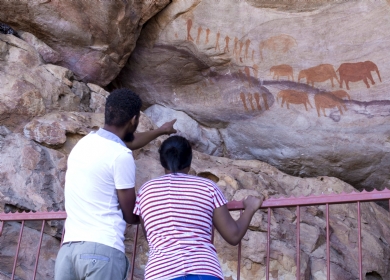
The Cederberg region is only two hours from Cape Town and yet the landscape is completely different: wilder, warmer with a raw, dramatic beauty. Clanwilliam and Citrusdal with its towering mountains, brilliant purple and orange sunsets, laden with the scent of orange blossom in the spring. Lambertsbaai and Elandsbaai, with their perfect waves for surfing, offer open air restaurants serving only the best of our seafood and have an abundance of bird life to be spotted. Wupperthal and Elandskloof, both missionary villages situated within these magnificent mountains, both have a wealth of history to be discovered.
Enjoy the beauty of the Cederberg in your own way: walk in the mountains with not another person in sight, enjoy bouldering and climbling at Rocklands; go and discover the beautiful bird life or get your surf on; swim in the clear mountain rock pools or marvel at the delicate Bushman rock art. Or simply relax and enjoy the exhilarating peace of this unspoilt paradise. The Cederberg has an exceptional botanical diversity, being part of the Cape Floral Kingdom of South Africa, and among the twisted rock formations, farmers cultivate the world-famous healthy rooibos tea, found only in the Cederberg of South Africa.
More Details
Drakensberg
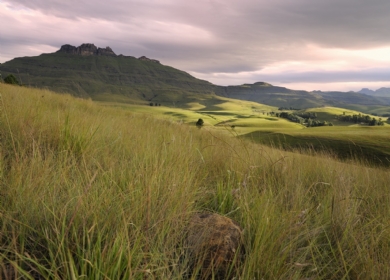
"Ukahlamba", or "Barrier of Spears" is a 200 kilmometre long mountain range, called the "Dragon Mountains" by the early Dutch voortrekkers.
Made up of awe-inspiring basalt cliffs, snowcapped in winter, which tower over riverine bush, lush yellowwood forests and cascading waterfalls, the range forms a massive barrier separating KwaZulu-Natal from the Kingdom of Lesotho.
Combining sheer natural beauty with a step back in time to the early tribes of Africa, the experience of exploring the Drakensberg is truly unforgettable.
More Details
Durban
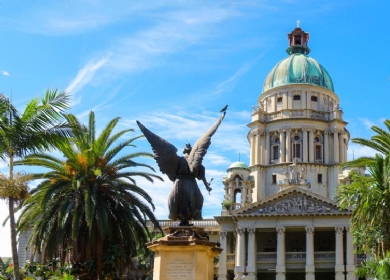
There is no city in South Africa quite like Durban. Because of its subtropical coastal climate, warm seas, safe swimming beaches, its variety of restaurants and nightlife and many sporting facilities, Durban has always been a holiday city, popular with both domestic and international visitors. It helps that Durban also has the excellent King Shaka International Airport, great transport infrastructure and a variety of accommodation to suit all tastes and pockets.
Durban’s rich cultural diversity is what gives it a vibrancy enjoyed by few other South African cities. By far the largest section of Durban’s population is Zulu speaking, and evidence of Zulu culture is everywhere – in the markets, in art galleries and theatres, on the streets where vendors sell Zulu and African crafts and curios, and in the sprawling townships that surround the city. It is fascinating to visit sites where people such as Mahatma Gandhi, John Dube and other heroes of the South African struggle once lived.
More Details
Eastern Cape
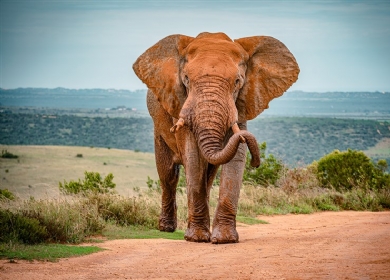
Located in the south-eastern part of South Africa, the Eastern Cape is a destination of unmatched natural beauty – from the warm Indian Ocean to the vast plains of the Camdeboo, stretching from the foothills of the Sneeuberg Mountains in the north to the rugged Baviaans mountain wilderness in the south.
The Eastern Cape’s boasting rights include over 800 km of incredible coastline with some of the most amazing beaches in all of South Africa, jaw-dropping rock formations and landscapes, and magnificently rich diversity of fauna and flora. The Baviaanskloof is renowned as a UNESCO World Heritage Site because of its extreme floristic diversity. Uniquely the Eastern Cape offers sightings of the Big 7 (lion, leopard, rhino, elephant, buffalo, Southern Right whales and Great White sharks). Friendly people and their generous hospitality is not the only warmth you’ll experience. The Eastern Cape has more ‘sunshine’ days than any other South African province – more than 300 out of 365 days are sunny. Most significantly, the Eastern Cape is the birthplace of several of South Africa’s most celebrated leaders, notably the late global icon and humanitarian, Nelson Mandela.
More Details
Garden Route
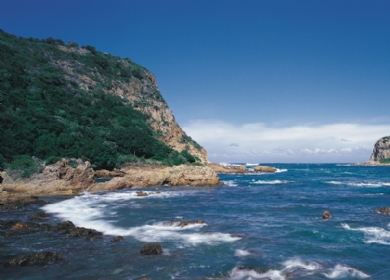
Running from Cape Town to Port Elizabeth, with rugged mountain ranges separating the forested coastline from the harsh, vast landscapes of the Karoo, the Garden Route has a host of enchanting towns, bays and beaches.
It is the ideal location for a family holiday, being simple to self-drive, and allowing pure relaxation.
With 3 main airports servicing the Garden Route, it is easy to access, but once there, it is hard to leave!
More Details
Johannesburg
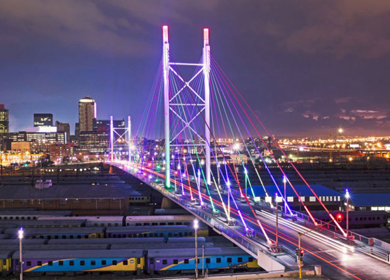
Although usually only used for quick stopovers by most travellers, Joburg is an exciting and vibrant city, with some excellent hotels, fantastic shopping facilities, loads of historic signifcance, and a flourishing sporting culture.
With the launch of the Gautrain in 2010, the Sandton district is now only 10 minutes from the airport, and this places one in a position to easily access most of the city's highlights.
More Details
Kruger Park & Surrounding Area
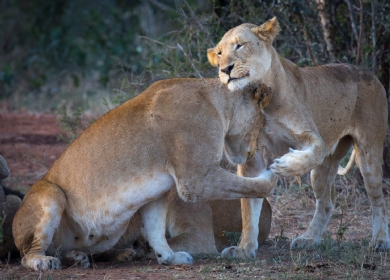
About a 6 hour drive, or a 1 hour flight, from Johannesburg, Kruger National Park is South Africa's largest and most famous national park. With nearly 2 million hectares, and an enormous variety of species (336 trees, 49 fish, 34 amphibians, 114 reptiles, 507 birds and 147 mammals), you can ensconce yourself in Africa's wilderness with ease. Bordering the park to the west is a number of private game reserves, with luxury lodges and exceptional game viewing. Inside the main park, visitors can drive themselves, and have access to remarkably low priced accommodation options.
More Details
KwaZulu-Natal - Battlefields
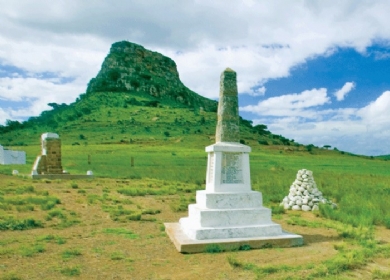
The battles fought in the rolling hills and valleys of northern KwaZulu-Natal some 120 years ago changed the course of South African history, and still today, the area now known as the ”Battlefields” seems to echo with the heroic and often tragic deeds of the past. The sites of famous skirmishes that rocked the British, weakened the Boers and broke the mighty Zulu nation continue to draw visitors.
A good place to start and to give some context to your visit to this fascinating and beautiful region of KZN would be to take a guided tour. Other options are to self-drive to each site with a good guidebook and just enjoy the beautiful and often haunting views, or for a wonderfully authentic experience, you can tour some places on horseback. Engaging the services of a qualified tourist guide will bring these sites to life. A great many forts established by the British during the South African wars have disappeared, while others, such as Fort Durnford near Estcourt, are now most interesting and somewhat quirky museums.
Isandlwana and Rorke’s Drift are two of the most famous battlefields in the country, and also perhaps in British history, perhaps because it was here that, in a furious two-hour battle, Zulu forces armed primarily with traditional spears and shields thrashed the mighty British Colonial Empire forces, one of the few times they were ever routed by an indigenous army. Eleven Victoria Crosses were awarded to those who defended Rorke’s Drift.
More Details
Kwazulu-Natal - Elephant Coast
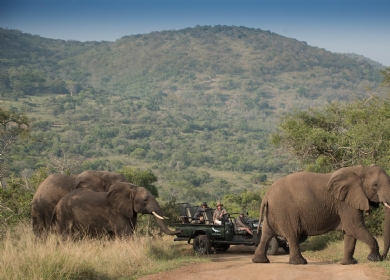
KwaZulu-Natal's Elephant Coast is an eco-tourism destination in every sense of the word. It's renowned for its wetland and wildlife conservation efforts, both of which are major tourism drawcards.
It offers a host of eco-oriented pursuits, of which Big 5 game viewing, hikes and walks, scuba diving, and sea turtle tracking are the most popular.
The Elephant Coast, KwaZulu-Natal houses two of South Africa's greatest natural institutions, the World Heritage Site iSimangaliso Wetland Park and the Hluhluwe-Imfolozi Park, made famous for its rhino preservation efforts.
iSimangaliso stretches for 220 km from Lake St Lucia to the Mozambique border. It is dominated by Lake St Lucia and the St Lucia estuary with its network of coastal lakes, dunes, subtropical forests, swamps and wetland systems that provide a haven for indigenous flora and fauna, especially bird life.
The park features several reserves, including the St Lucia Game Reserve, St Lucia Marine Reserve, the Sodwana Bay National Park, Maputaland Marine Reserve, False Bay Park and Mkuze Game Reserve, all of which promise exciting game viewing.
There are countless ways to explore iSimangaliso, including hiking, walking, forest and dune trails, boat cruises, canoeing and scuba diving the spectacular coral reefs at Sodwana Bay.
Inland, the Hluhluwe-Imfolozi Park is a conservation marvel renowned for its efforts to save the white rhino from extinction. Today it is home to more than 1 000 white rhino, lion, elephant, buffalo and leopard, providing an authentic Big 5 African safari experience.
The Elephant Coast's magnificent beaches are another major attraction, not only to visitors from around the world, but also to hordes of endangered loggerhead and leatherback turtles that lay their eggs in the dunes here between November and January.
More Details
KwaZulu-Natal - Zululand
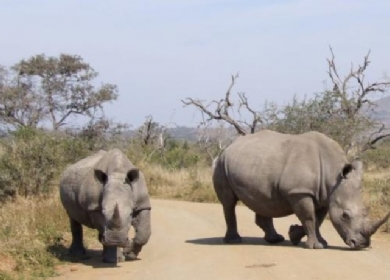
No culture is static, especially in Africa where traditional life is constantly under threat from modernisation. Despite this, in the rural area of KwaZulu-Natal generally known as Zululand, many cultural practices remain intact and there are sites of great cultural significance to be explored.
Zululand Cultural Villages
It can sometimes be difficult to experience traditional culture first hand. However, one way to do this is to visit one of the many cultural villages, or what are often referred to as ‘living museums’. At places such as Shakaland, Dumazulu or Simunye, it is possible to catch a glimpse of a lifestyle and traditions that are slowly transforming. Here you can sleep over in a traditional Zulu homestead, sample traditional Zulu cuisine and Nqombothi (Zulu beer), and visit a traditional healer who can also take you for a walk to teach you something about the many fascinating medicinal plants still used by a vast majority of rural South Africans.
eMakhosini, (which literally means the ‘Valley of the Chiefs’), lies southwest of Ulundi, one of the biggest towns in the region. The graves and royal residences of four Zulu kings, Shaka, Dingane, Mpande and Cetswayo, who ruled in succession from 1816 – 1884, are located in and around eMakhosini, as are the great, royal Zulu homesteads of Ondini, Nodwengu, KwaDukuza and uMgungundlovu. Some of these residences were razed to the ground by the British Imperial forces, but have been restored and developed, have museums and guides, and are now accessible to visitors.
eMakhosini also has ties with the Voortrekkers. Voortrekker leader, Piet Retief, lies buried in the valley at kwaMatiwane, the Hill of Execution, and there are graves and monuments that, with the help of a good guide, can provide fascinating and enlightening insights into modern South African society and politics.
While much of a visit to Zululand is about discovering South Africa’s history and cultural heritage, there are also many lovely, eccentric small villages. Eshowe has a canopy boardwalk through the Dlinza Forest and the excellent art and craft centre at Fort Nonqayi. In the little coastal town of Mtunzini, wander through one of the last remaining protected stands of Raffia palms and possibly spot a rare palm nut vulture.
More Details
Madikwe Game Reserve
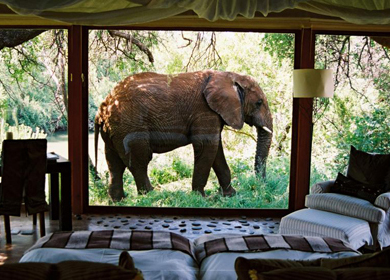
Right along the border with Botswana, Madikwe Game Reserve is a fantastic example of a succesful conservation effort between government, private sectors and local communities.
As a relatively young reserve, having being proclaimed in 1991, the area has been involved in a huge amount of conservation efforts, land reclamation, and relocation of wildlife.
A host to all of the Big 5 as well as a huge variety of others species, and also in a malaria-free area, the game reserve is fantastic for a wildlife experience with the family.
More Details
Northern Cape
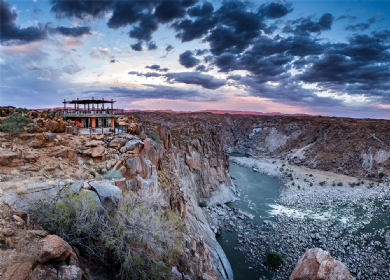
The Northern Cape is South Africa's largest province, with desert landscapes, wildlife and gemstones. With Botswana, it shares Kgalagadi Transfrontier Park, whose red sand dunes shelter lions and falcons. Wild daisies and other springtime flowers carpet the typically arid plains of Namaqualand, a region stretching into Namibia. In Kimberley, the provincial capital, The Big Hole mine recalls the 1870s diamond rush.
More Details
Oudtshoorn
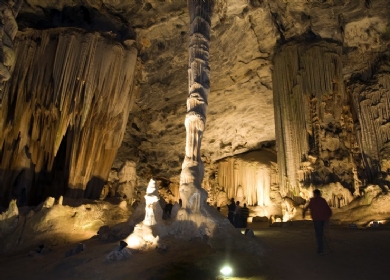
The ostrich capital of the world is an adventure, culture and environment destination in the Klein Karoo – the unique semi-arid landscape that lies between the Swartberg and Outeniqua mountain ranges.
Most visitors come to Oudtshoorn to see ostriches and to experience the Cango Caves, but the town itself is a treasure of interesting historical facts and -buildings. The good news is that it will cost the visitor less than an average meal to experience it. Why not spend a day or two just exploring the history of the town?
More Details
Panorama Route
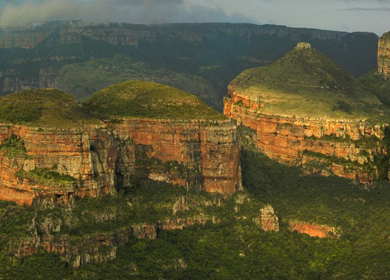
The Panorama Route in Mpumalanga starts at Nelspruit where you can visit the Lowveld Botanical Garden.
It moves on to White River where you can go play golf and visit a Motor Museum. Sabie brings tons of adventure with activities like 4x4 trips and abseiling. Pilgrims Rest has a few spectacular pubs and restaurants, which is a must if you want to experience the culture of the town.
Graskop is the highlight of the Panorama Route, with attractions like:
- God's Window
- Lisbon Falls
- Berlin Falls
- the Pinnacle
- Bourke`s Luck Potholes, and
- Blyde River Canyon
The Panorama Route ends at the Swadini Forever Resort, which has tons of activities from boat trips to Microlight fights.
More Details
Sun City and Pilanesberg
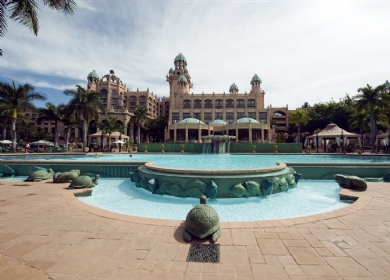
Situated along the border of the Pilanesberg National Park and featuring The Valley of the Waves, Sun City Resort enjoys the fine distinction of being the only surf-and-safari destination within a two-hour drive of landlocked Johannesburg. The resort offers accommodation from the family orientated Cabanas to the luxury Palace of the Lost City and provides a variety of entertainment and leisure activities.
With an area of 550km², Pilanesberg is the fourth largest park in South Africa. The volcano crater in which the park is situated erupted 1300 million years ago. Pilanesberg was originally owned by 3 of the local tribes. Many of the Stone Age and Iron Age sites around the reserve show proof of the early presence of man.
The relatively small size of the park, and its unusual ecological richness, dramatically increase your chance of encountering the Big 5 in their natural environment.
Some of the most beautiful scenery within the entire park can be viewed in the Mankwe Dam region. The dam is the largest body of water in the game reserve. This makes it the perfect place to spot a wide variety of animals: water-buck, wildebeest, zebra and impala are among the animals that make a stopover on the grassland bordering the dam.
More Details
Waterberg
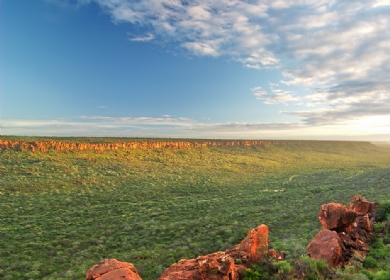
The Waterberg region is located near the majestic Waterberg Mountain Range in the Limpopo Province of South Africa. Away from the concrete, streets and bustle of people going to work every day, this region is known for its natural beauty, bushveld savannah and large animal population. The Waterberg Region consists of a 150km long range, which stretches northeast from Thabazimbi past Vaalwater. It is protected by the 15,000-sq-km Waterberg Biosphere Reserve, one of Africa’s two savannah biospheres. This region caters for the nature and wildlife lovers in the form of the Waterberg Nature Conservancy. It offers scenery of magnificent wildlife, interesting birdlife and rugged bushveld. The Nylsvley Bird and Nature Reserve is also close-by and boasts one of the best conserved floodplains in the country. A Unesco biosphere reserve the size of the Okavango Delta, is also situated in the Waterberg Region of Limpopo. With a top peak of 2100m, the Waterberg region has a mild climate and some wild terrain for spotting the Big Five (lion, leopard, buffalo, elephant and rhino). It has picturesque rivers and cleaves through bushveld and sourveld (a type of grassland).
More Details
Whale Coast
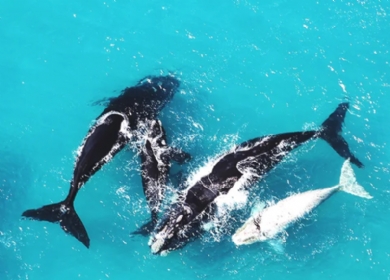
The unspoiled Cape Whale Coast is embraced by majestic mountains and the Atlantic Ocean. This entire region is celebrated for its abundant whale sightings, especially within the Walker Bay region spanning from Hermanus to Gansbaai. These magnificent creatures venture into the bay for mating and birthing purposes, delighting observers with their captivating displays of breaching antics.
More Details

